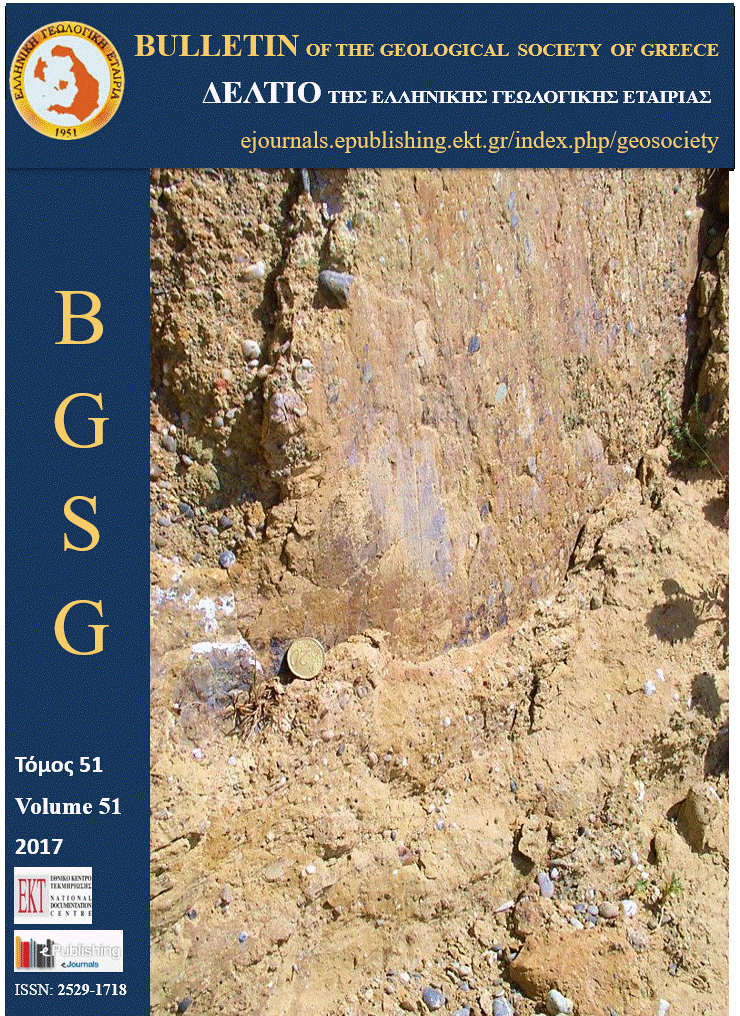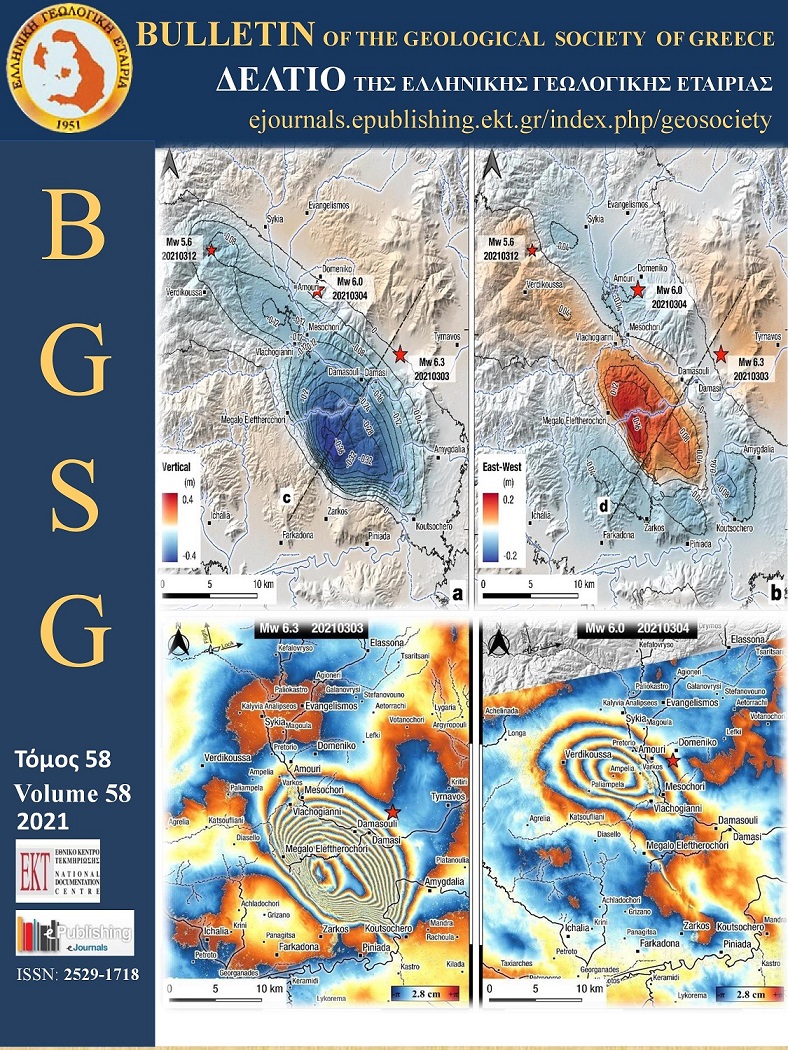The geological structure of Kastas hill archaeological site, Amphipolis, eastern Macedonia, Greece

Abstract
This paper presents research results on the geological structure of Kastas hill in Amphipolis, as well as the broader area. They consist of geological and geomorphological observations at Kastas and 133 hills and the surrounding areas, on their geological structure, the stratigraphy and the paleoenvironment. Kastas hill is the site of the largest burial mound discovered in Greece to date. The slopes of its embankment were recorded and modelled in detail using near field photogrammetry. The problem of distinguishing between in situ geological formations and ex situ anthropogenic deposits is also addressed. The bulk volume of Kastas hill consists of natural sediments; these sediments are exposed as successive alternating beds of grayish loose and cohesive sands with scattered pebbles and locally with cobbles. Clayey beds up to ~20-30 cm thick intercalate between the sands. At the top of the hill the anthropogenic deposits are typical of Macedonian tumuli, with soil and clay alternations for sealing and stabilizing them. Paleosoil horizons were observed both in natural sediments and within anthropogenic substrates. Two horizons were sampled for dating by different methods (OSL – optical stimulated luminescence and 14C – Accelerated Mass Spectroscopy). Their dating shows the development of successive deposits during the Iron, Archaic and Classical ages. The AMS dating of a charcoal which is closely associated to the construction of the main monument yielded an age of Cal. BP 2310 = Cal. 360 BC.
Article Details
- How to Cite
-
Syrides, G., Pavlides, S., & Chatzipetros, A. (2017). The geological structure of Kastas hill archaeological site, Amphipolis, eastern Macedonia, Greece. Bulletin of the Geological Society of Greece, 51, 38–51. https://doi.org/10.12681/bgsg.14333
- Section
- Geoarchaeology

This work is licensed under a Creative Commons Attribution-NonCommercial 4.0 International License.
Authors who publish with this journal agree to the following terms:
Authors retain copyright and grant the journal right of first publication with the work simultaneously licensed under a Creative Commons Attribution Non-Commercial License that allows others to share the work with an acknowledgement of the work's authorship and initial publication in this journal.
Authors are able to enter into separate, additional contractual arrangements for the non-exclusive distribution of the journal's published version of the work (e.g. post it to an institutional repository or publish it in a book), with an acknowledgement of its initial publication in this journal. Authors are permitted and encouraged to post their work online (preferably in institutional repositories or on their website) prior to and during the submission process, as it can lead to productive exchanges, as well as earlier and greater citation of published work.



